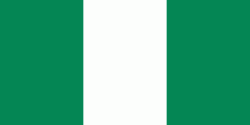Amuwo-Odofin (Amuwo Odofin)
Amuwo Odofin LGA is divided into Oriade and Amuwo Local Council Development Area (LCDA) with 7 wards each; Abule-osun, Agboju, Ibeshe, Ijegun, Irede, Kirikir and Kuje wards constitute Oriade LCDA and Ado-soba, Ekoakete, Ifelodun, Ilado Tamaro, Irepodun, Odofin and Orire wards comprising Amuwo LCDA.
Spread among the 14 wards are 67 communities, 12 of which are Urban, 8 semi-urban and 47 rural. Amuwo Odofin LGA has a population density of approximately 300,000 people per square kilometer.
The LGA, with a population of over 1,500,000 according to the 2006 Census shares its boundaries with Ajeromi and Ifelodun LCDA in the East, Oriade LCDA in the West, the Badagry Creek to the South and Isolo/Igando LCDA to the North.
The indigenous dwellers of Amuwo Odofin are mainly the Aworis. Some of the festivals embraced by the people are Elegba, Oro, Sangbeto and Igunuko festivals. The custodians of culture and tradition in the area are the traditional rulers. The Local Government is blessed with highly reputable Obas and Chiefs and Baales. This includes Oba Mobadenle Obalade Oyekan- the Onilado of Ilado/Inagbe Islands and Oba Lateef Olayinka Ado, Fabuwa 1, Alado of Ado Land.
Nonetheless, considering its location as a near border Local Government, International trade has found its root in the area with people of various extractions engaging in various forms of trading activities. It must also be stated that the hospitality of the people has also attracted people from other ethnic tribes in Nigeria mostly the Igbos who account for more than half of the area's total population.
However, Coronavirus was dictated in this Local Government Area, among eight people who had confirmed cases. Hence, coronavirus awareness and medical outreach was offered to Shoba community of Amuwo Odofin, Lagos State.
Map - Amuwo-Odofin (Amuwo Odofin)
Map
Country - Nigeria
 |
 |
| Flag of Nigeria | |
Nigeria has been home to several indigenous pre-colonial states and kingdoms since the second millennium BC, with the Nok civilization in the 15th century BC, marking the first internal unification in the country. The modern state originated with British colonialization in the 19th century, taking its present territorial shape with the merging of the Southern Nigeria Protectorate and Northern Nigeria Protectorate in 1914 by Lord Lugard. The British set up administrative and legal structures while practising indirect rule through traditional chiefdoms in the Nigeria region. Nigeria became a formally independent federation on 1 October 1960. It experienced a civil war from 1967 to 1970, followed by a succession of military dictatorships and democratically elected civilian governments until achieving a stable democracy in the 1999 presidential election. The 2015 general election was the first time an incumbent president failed to be re-elected.
Currency / Language
| ISO | Currency | Symbol | Significant figures |
|---|---|---|---|
| NGN | Nigerian naira | ₦ | 2 |
| ISO | Language |
|---|---|
| EN | English language |
| HA | Hausa language |
| IG | Igbo language |
| YO | Yoruba language |















